AUCTORES
Globalize your Research
Research Article | DOI: https://doi.org/10.31579/2768-0487/168
1Department of Haematology and Blood Transfusion, Federal Medical Centre, Umuahia, Abia State, Nigeria.
2Department of Haematology and Blood Transfusion, Abia State University, Uturu, Nigeria.
3Department of Haematology and Immunology, College of Medicine, University of Nigeria, Ituku-Ozalla Campus, Enugu State, Nigeria.
4Department of Haematology and Blood Transfusion, University of Abuja, Gwagwalada, Nigeria.
5Department of Biochemistry, Lead City University, Ibadan, Oyo State, Nigeria.
*Corresponding Author: Chikezie Kelechi, Department of Haematology and Blood Transfusion, Federal Medical Centre, Umuahia, Abia State, Nigeria.
Citation: Chikezie K, Uche CL, Ocheni S, Nwabuko OC, Agwu O et al., (2025), Preeclampsia and its Clinico-Laboratory Markers: A Comparative Study Among Pregnant Women in Enugu State, Nigeria, Journal of Clinical and Laboratory Research, 8(2); DOI:10.31579/2768-0487/168
Copyright: © 2025, Chikezie Kelechi. This is an open-access article distributed under the terms of the Creative Commons Attribution License, which permits unrestricted use, distribution, and reproduction in any medium, provided the original author and source are credited.
Received: 11 February 2025 | Accepted: 18 February 2025 | Published: 26 February 2025
Keywords: preeclampsia; haematological profile; blood pressure; platelet count; proteinuria
Background: Preeclampsia remains a significant cause of maternal and fetal morbidity and mortality globally. This study aimed to assess the clinico-laboratory markers of pregnant women with preeclampsia in Enugu State, Nigeria.
Methods: A cross-sectional descriptive study was conducted among pregnant and 24–48-hour post-delivery women with and without preeclampsia at the University of Nigeria Teaching Hospital (UNTH) and Enugu State University Teaching Hospital (ESUTH). Participants were recruited based on inclusion and exclusion criteria, and socio-demographic data, clinical history, blood pressure, platelet count, and urine protein levels were recorded. Ethical approval was obtained, and informed consent was secured.
Results: The study included 156 participants, equally divided into preeclamptic (n=78) and non-preeclamptic (n=78) groups. The mean age distribution was similar between groups (21–40 years: 89.8%). Preeclamptic women exhibited significantly higher proteinuria levels (+2: 74.4%; +3: 25.6%) compared to non-preeclamptic women (Nil: 98.7%, +1: 1.3%) (p<0.001). Platelet counts were significantly lower in preeclamptic women (<90 x 10⁹/L: 25.6%) compared to non-preeclamptic women (0.0%) (p<0.001). Blood pressure readings indicated that 87% of preeclamptic women had values >150/100 mmHg, while 97.4% of non-preeclamptic women had BP <140/90 mmHg (p<0.001). A family history of preeclampsia was more prevalent among preeclamptic women (2.6% vs. 0.0%) but was not statistically significant (p=0.27).
Conclusion: The study highlights significant haematological and 'serologic' alterations among preeclamptic women, particularly concerning proteinuria, platelet count, and blood pressure. These findings reinforce the need for early detection and monitoring of these parameters to improve maternal and fetal outcomes in Enugu State, Nigeria.
Preeclampsia is a multifaceted hypertensive disorder unique to pregnancy, typically emerging after 20 weeks of gestation [1]. It is clinically characterized by elevated blood pressure and often accompanied by proteinuria. The condition significantly contributes to maternal and perinatal morbidity and mortality worldwide, with a pronounced impact in low- and middle-income countries. In Nigeria, the prevalence of preeclampsia varies widely, ranging from 2% to 16.7%, depending on the population studied [2].
The pathogenesis of preeclampsia is complex and not fully elucidated. It is believed to involve abnormal placentation, leading to systemic endothelial dysfunction and a cascade of clinical manifestations affecting multiple organ systems. Risk factors include primigravidity, advanced maternal age, obesity, multiple gestations, and a history of certain medical conditions such as chronic hypertension and diabetes mellitus [3].
In Enugu State, Nigeria, studies have reported varying prevalence rates of preeclampsia. For instance, a study conducted at the University of Nigeria Teaching Hospital (UNTH) in Enugu observed a prevalence rate of 3.3% over a four-year period [4]. This variability underscores the need for localized research to understand the burden of the disease better and to develop targeted interventions.
The clinical presentation of preeclampsia can range from mild to severe forms, with potential progression to eclampsia, characterized by the onset of seizures. Laboratory investigations play a crucial role in the diagnosis and management of preeclampsia. Common laboratory markers include elevated liver enzymes, thrombocytopenia, and indicators of renal impairment such as increased serum creatinine levels. Recent studies have explored the utility of various biomarkers in predicting and diagnosing preeclampsia. For example, angiogenic factors like soluble fms-like tyrosine kinase-1 (sFlt-1) and placental growth factor (PlGF) have shown promise in early detection [3].
Despite advancements in understanding the pathophysiology and management of preeclampsia, it remains a significant cause of adverse maternal and fetal outcomes in Nigeria. A systematic review and meta-analysis highlighted the substantial burden of preeclampsia and eclampsia in the country, emphasizing the need for improved healthcare strategies to mitigate associated complications and mortality rates [3].
Given the heterogeneity in the clinical presentation and progression of preeclampsia, there is a critical need for comparative studies focusing on clinico-laboratory markers among pregnant women in different regions, including Enugu State. Such research could provide valuable insights into region-specific risk factors, enhance early detection, and inform tailored management protocols to improve maternal and fetal outcomes.
Study Design
The study is a cross-sectional descriptive study involving pregnant and 24-48 hours post-delivery women with preeclampsia and those without the disease receiving antenatal care at UNTH and ESUTH, Enugu.
Study Area
The study was conducted in the Obstetrics and Gynaecology Departments of the University of Nigeria Teaching Hospital (UNTH) Ituku-Ozala, and Enugu State University Teaching Hospital (ESUTH), Park lane, GRA, both in Enugu state. These are the two Teaching Hospitals in Enugu state. The samples were analysed in the Haematology laboratory of UNTH Enugu.
Study Population
Subjects were pregnant women diagnosed with preeclampsia as defined by WHO25 (BP ≥ 140/90mmhg and proteinuria of ≥ 2+ in pregnant women of 20 weeks gestation and above as well as those 24-48 hours post-delivery) and those with normal pregnancy recruited at the antenatal clinics and wards (antenatal, postnatal and labour wards) of UNTH and ESUTH.
Inclusion Criteria
Women who are pregnant or 24-48 hours post-delivery with an established diagnosis of preeclampsia were recruited as the study group, while women who do not have preeclampsia or any other hypertensive and medical diseases who are above 20 weeks of gestation or 24-48 hours post-delivery were recruited as the control group.
Exclusion Criteria
Pregnant women with hypertensive disorders of pregnancy other than preeclampsia or other diagnosed morbidities and pregnant women below 20 weeks of gestation were excluded from the study. Previously transfused pregnant women were also excluded from the study.
The duration of the study was twenty-four months.
Sampling Method
Cases and controls were recruited in a non-randomized fashion after confirming from the participants that they had not been earlier recruited for this study. The preeclamptic group was first recruited, and subsequently, the non-preeclamptic group was recruited. The non-preeclamptic group was matched with the preeclamptic group for age range, parity and total number on both sides.
Sample Size Determination
The sample size was determined using the formula for comparison of two proportions [5]:
n= 2(Zα/2+ Zβ)2 P(1-P)/(P1-P2)2, where:
n= minimum sample size
Zα/2 = critical value of the normal distribution at α/2
Zβ = critical value of the normal distribution at β
P= pooled prevalence (prevalence in case group, P1 + prevalence in control group, P2)
P1-P2= difference in the proportion of events in two groups
To calculate the sample size (using the Z table), Zα/2 = 1.64 at 90% confidence interval and Zβ = 0.84 for a power of 80%. Taking P1 to be 28% (0.28) and P2 to be 12% (0.12) from the findings of Mital et al. [6] on the presence of AB blood group among preeclamptic (case) and non-preeclamptic (control) pregnant women in India, the sample size is calculated thus:
n= 2(1.64 + 0.84)2 0.2(1-0.2)/(0.16)2
n= 12.3 x 0.16/0.0256 =76.88
The calculated minimum sample size was approximately 77 for each group of the study.
Detailed clinical, pertinent personal history and other relevant information were collected by the researcher/assistant from clinical/ward records and the patients or their caregivers using a well-structured questionnaire specifically designed for this study. The blood pressure of all participants was tested and reported. Whole blood samples were collected from the study and control groups at recruitment and used for the determination of platelet counts. Urine was also collected for analysis.
All data collected from the study were cleaned, coded, entered into the computer on a pre-designed Excel spreadsheet and analysed using the statistical package for Social Sciences (SPSS) computer software version 21. Also, quantitative data were summarized using mean ± standard deviation (SD), median, mode and range; and outcomes were presented in tables and figures. Qualitative data were presented in proportions. Differences in mean between the cases and the control were analysed using the student t-test, while differences in proportions and test of association were done using the chi-squared test. All tests were two-sided and the statistical significance was considered to be at a probability (p) value of <0.05.
The socio-demographic characteristics of pre-eclamptic and non-pre-eclamptic women were compared in Table 1. Age distribution showed no significant difference between the two groups, as 43.6% of both groups were aged 21-30 years, and 46.2% were aged 31-40 years, with a p-value of 1.00. Education levels revealed that 60.3% of all women had tertiary education, with no significant differences between the groups (p = 0.82). Occupational differences were also insignificant (p = 0.55), with most women in both groups being civil servants (35.9%) and traders (23.1%). Religious affiliation showed a similar trend, with 93.6% of all women being Christian and no significant difference between the groups (p = 0.51). Ethnicity was predominantly Igbo (96.2%) across both groups.
Regarding the history of preeclampsia, Figure 1 shows that none of the non-preeclamptic women had a previous history of preeclampsia, while 15.4% of the preeclamptic women reported a previous occurrence, a statistically significant difference (p < 0.001). Figure 2 highlights family history findings, showing that 25.6% of preeclamptic women had a family history of preeclampsia, compared to 25.0% in the non-preeclamptic group, with no significant difference (p = 0.27).
Clinico-laboratory parameters are presented in Figures 3-5. Urine protein findings (Figure 3) were significantly different, with 98.7% of non-preeclamptic women showing no proteinuria, compared to 74.4% of preeclamptic women showing +2 proteinuria, and 25.6% showing +3 proteinuria (p <0.001). Platelet count findings in Figure 4 also showed significant differences, with 49.0% of non-preeclamptic women falling within the 151-300 x 109 range, while preeclamptic women were more likely to be in the 90-150 x 109 range (43.8%) (p < 0.001). Blood pressure findings (Figure 5) revealed that all non-preeclamptic women had normal blood pressure (<140/90), while 33.0% of preeclamptic women had blood pressure >160/100, a statistically significant difference (p< 0.001).
| Characteristic | Pre-eclamptic women n=78 (%) | Non pre-eclamptic women n=78 (%) | All Women n=156 | χ2 | p-value |
| Age (in years) | |||||
| 21-30 | 34 (43.6) | 34 (43.6) | 68 (43.6) | ||
| 31-40 | 36 (46.2) | 36 (46.2) | 72 (46.2) | 0.00 | 1.00 |
| >40 | 8 (10.3) | 8 (10.3) | 16 (10.3) | ||
| Educational Status | |||||
| None | 2 (2.6) | 1 (1.3) | 3 (1.9) | ||
| Primary | 5 (6.4) | 6 (7.7) | 11 (7.1) | 0.93 | 0.82 |
| Secondary | 26 (33.3) | 22 (28.2) | 48 (30.8) | ||
| Tertiary | 45 (57.7) | 49 (62.8) | 94 (60.3) | ||
| Occupation | |||||
| Civil Servant | 30 (38.5) | 26 (33.3) | 56 (35.9) | ||
| Trader | 16 (20.5) | 20 (25.6) | 36 (23.1) | ||
| Work in private firm | 10 (12.8) | 6 (7.7) | 16 (10.3) | ||
| Farmer | 6 (7.7) | 4 (5.1) | 10 (6.4) | 3.08 | 0.55 |
| Others | 16 (20.5) | 22 (28.2) | 38 (24.4) | ||
| Religion | |||||
| Christian | 72 (92.3) | 74 (94.9) | 146 (93.6) | ||
| Muslim | 6 (7.7) | 4(5.1) | 10 ((6.4) | 0.43 | 0.51 |
| Tribe/ethnicity | |||||
| Igbo | 75 (96.2) | 75 (96.2) | 150 (96.2) | ||
| Hausa | 2 (2.6) | 3 (3.8) | 5 (3.2) | 1.58 | 0.45 |
| Yoruba | 1 (1.3) | 0 (0.0) | 1 (0.6) | df=1 |
Table 1: Socio-Demographic Characteristics
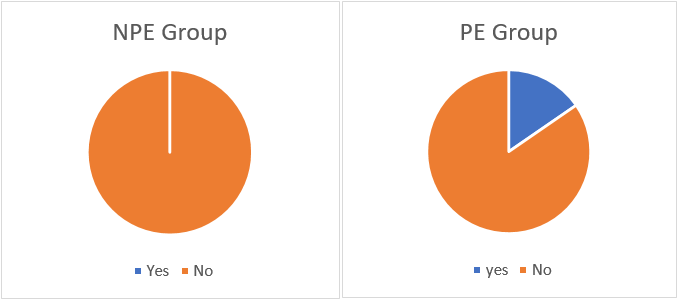
Figure 1: Data on the previous history of preeclampsia
Key: NPE- Non-preeclamptic; PE- Preeclamptic, p<0.001.
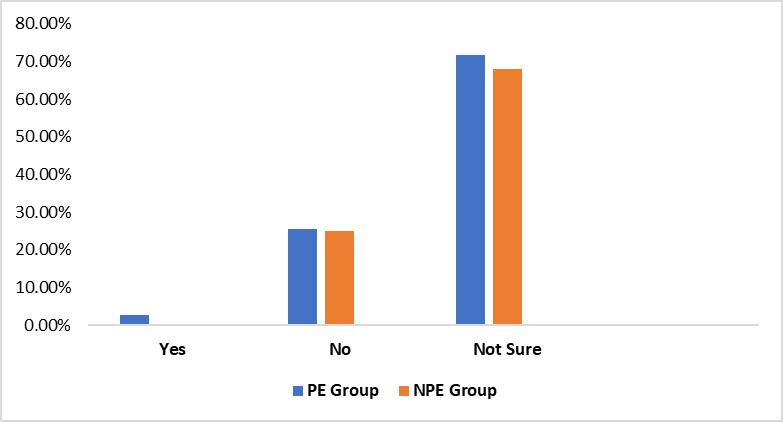
Figure 2: Family history of preeclampsia
Key: PE- Preeclamptic; NPE- Non preeclamptic; p=0.27
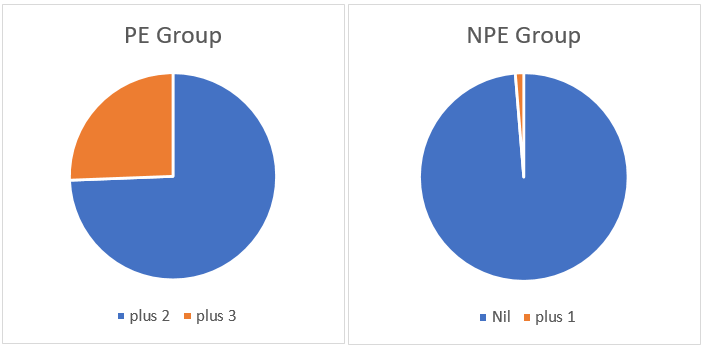
Figure 3: Urine protein findings in both groups
Key: PE- Preeclamptic (+2=74.4%; +3=25.6%); NPE- Non preeclamptic (Nil=98.7%; +1=1.3%) p<0.001
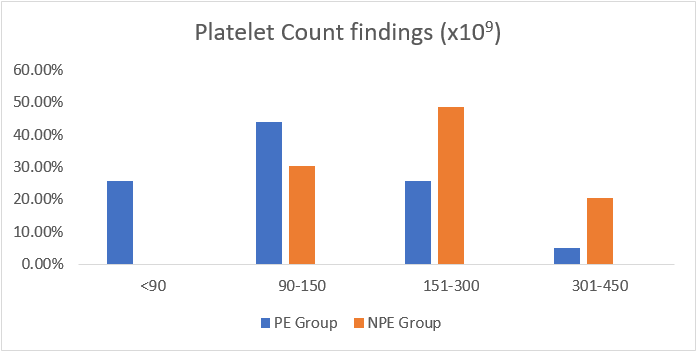
Figure 4: Platelet count findings in both groups
Key: PE- Preeclamptic; NPE- Non preeclamptic; p<0.001
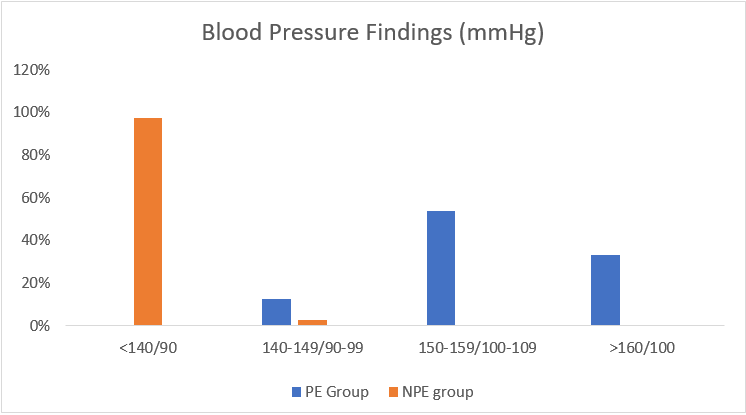
Figure 5: Blood pressure findings in both groups
Key: PE- Preeclampsia; NPE- Non preeclampsia; p<0.001
The socio-demographic characteristics of pre-eclamptic and non-pre-eclamptic women were compared in Table 1. Age distribution showed no significant difference between the two groups, as 43.6% of both groups were aged 21-30 years, and 46.2% were aged 31-40 years, with a p-value of 1.00. Education levels revealed that 60.3% of all women had tertiary education, with no significant differences between the groups (p = 0.82). Occupational differences were also insignificant (p = 0.55), with most women in both groups being civil servants (35.9%) and traders (23.1%). Religious affiliation showed a similar trend, with 93.6% of all women being Christian and no significant difference between the groups (p = 0.51). Ethnicity was predominantly Igbo (96.2%) across both groups.
Regarding the history of preeclampsia, Figure 1 shows that none of the non-preeclamptic women had a previous history of preeclampsia, while 15.4% of the preeclamptic women reported a previous occurrence, a statistically significant difference (p < 0.001). Figure 2 highlights family history findings, showing that 25.6% of preeclamptic women had a family history of preeclampsia, compared to 25.0% in the non-preeclamptic group, with no significant difference (p = 0.27).
Clinico-laboratory parameters are presented in Figures 3-5. Urine protein findings (Figure 3) were significantly different, with 98.7% of non-preeclamptic women showing no proteinuria, compared to 74.4% of preeclamptic women showing +2 proteinuria, and 25.6% showing +3 proteinuria (p <0.001). Platelet count findings in Figure 4 also showed significant differences, with 49.0% of non-preeclamptic women falling within the 151-300 x 109 range, while preeclamptic women were more likely to be in the 90-150 x 109 range (43.8%) (p < 0.001). Blood pressure findings (Figure 5) revealed that all non-preeclamptic women had normal blood pressure (<140/90), while 33.0% of preeclamptic women had blood pressure >160/100, a statistically significant difference (p< 0.001).
| Characteristic | Pre-eclamptic women n=78 (%) | Non pre-eclamptic women n=78 (%) | All Women n=156 | χ2 | p-value |
| Age (in years) | |||||
| 21-30 | 34 (43.6) | 34 (43.6) | 68 (43.6) | ||
| 31-40 | 36 (46.2) | 36 (46.2) | 72 (46.2) | 0.00 | 1.00 |
| >40 | 8 (10.3) | 8 (10.3) | 16 (10.3) | ||
| Educational Status | |||||
| None | 2 (2.6) | 1 (1.3) | 3 (1.9) | ||
| Primary | 5 (6.4) | 6 (7.7) | 11 (7.1) | 0.93 | 0.82 |
| Secondary | 26 (33.3) | 22 (28.2) | 48 (30.8) | ||
| Tertiary | 45 (57.7) | 49 (62.8) | 94 (60.3) | ||
| Occupation | |||||
| Civil Servant | 30 (38.5) | 26 (33.3) | 56 (35.9) | ||
| Trader | 16 (20.5) | 20 (25.6) | 36 (23.1) | ||
| Work in private firm | 10 (12.8) | 6 (7.7) | 16 (10.3) | ||
| Farmer | 6 (7.7) | 4 (5.1) | 10 (6.4) | 3.08 | 0.55 |
| Others | 16 (20.5) | 22 (28.2) | 38 (24.4) | ||
| Religion | |||||
| Christian | 72 (92.3) | 74 (94.9) | 146 (93.6) | ||
| Muslim | 6 (7.7) | 4(5.1) | 10 ((6.4) | 0.43 | 0.51 |
| Tribe/ethnicity | |||||
| Igbo | 75 (96.2) | 75 (96.2) | 150 (96.2) | ||
| Hausa | 2 (2.6) | 3 (3.8) | 5 (3.2) | 1.58 | 0.45 |
| Yoruba | 1 (1.3) | 0 (0.0) | 1 (0.6) | df=1 |
Table 1: Socio-Demographic Characteristics
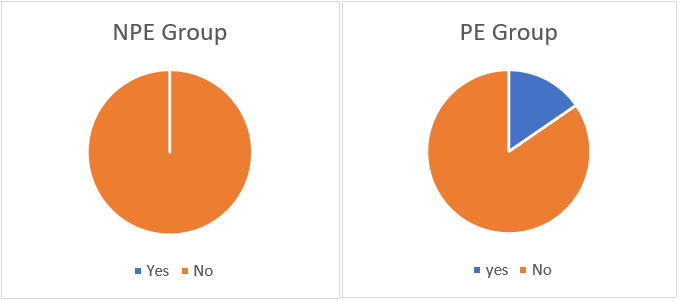
Figure 1: Data on the previous history of preeclampsia
Key: NPE- Non-preeclamptic; PE- Preeclamptic, p<0.001.
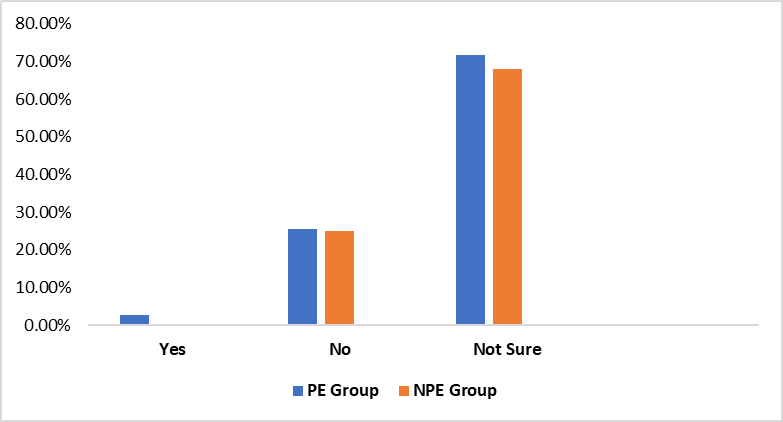
Figure 2: Family history of preeclampsia
Key: PE- Preeclamptic; NPE- Non preeclamptic; p=0.27
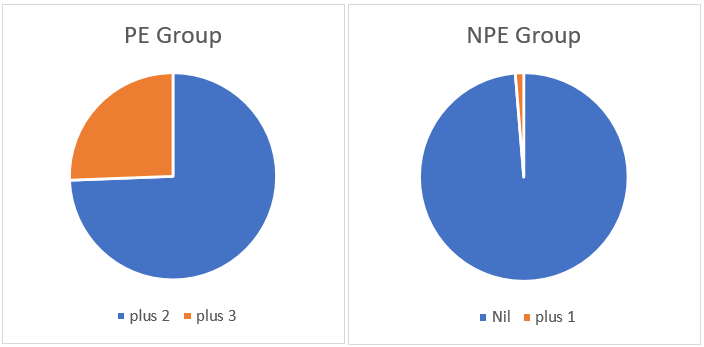
Figure 3: Urine protein findings in both groups
Key: PE- Preeclamptic (+2=74.4%; +3=25.6%); NPE- Non preeclamptic (Nil=98.7%; +1=1.3%) p<0.001
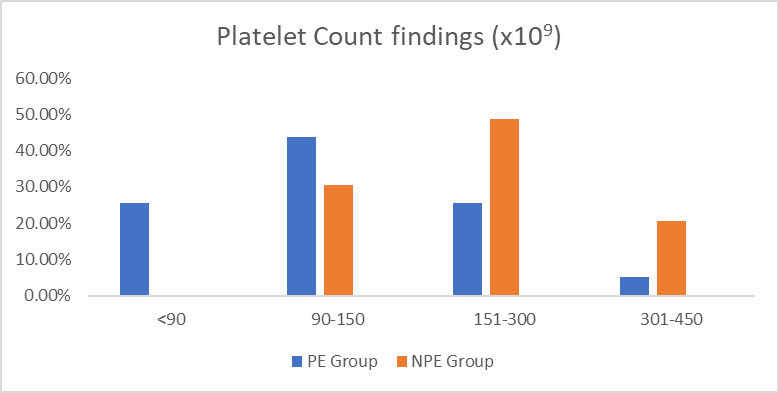
Figure 4: Platelet count findings in both groups
Key: PE- Preeclamptic; NPE- Non preeclamptic; p<0.001
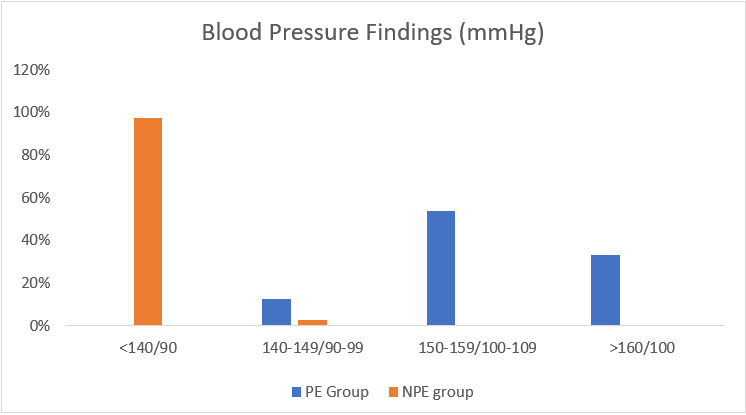
Figure 5: Blood pressure findings in both groups
Key: PE- Preeclampsia; NPE- Non preeclampsia; p<0.001
Preeclampsia is a hypertensive disorder of pregnancy characterized by elevated blood pressure and often proteinuria, posing significant risks to both maternal and fetal health. Understanding the socio-demographic, haematological, and serologic profiles of affected individuals is crucial for effective management and intervention strategies.
The socio-demographic characteristics of the 'study participants'. indicate no statistically significant differences between pre-eclamptic and non-pre-eclamptic pregnant women across various parameters, including age, educational status, occupation, religion, and ethnicity. This suggests that socio-demographic variables may not be independent predictors of preeclampsia in this cohort.
The majority of the participants in both groups were between 31-40 years old (46.2%), followed by those aged 21-30 years (43.6%). This aligns with studies conducted in Nigeria and other African countries, where preeclampsia is more prevalent among women in their reproductive prime [7]. However, other studies have reported a higher prevalence among women younger than 30 years, particularly primigravida [8]. The lack of statistical significance (P=1.00) in this study may suggest that age alone is not a strong independent risk factor, but rather interacts with other physiological and genetic predispositions.
The majority of the participants had tertiary education (60.3%), with a slightly lower proportion in the pre-eclamptic group (57.7%) compared to the non-pre-eclamptic group (62.8%). This finding corroborates reports by Adewunmi et al. [9], who found that preeclampsia occurs across all educational levels, though lower education has been associated with increased risk due to limited health literacy and healthcare access [10]. Despite the variation in numbers, the difference was not statistically significant (P=0.82), indicating that education alone may not be a determinant of preeclampsia but may interact with other socio-economic factors.
Occupational status varied among participants, with civil servants (35.9%) being the most represented. While more pre-eclamptic women were civil servants (38.5%) compared to non-pre-eclamptic women (33.3%), the difference was not statistically significant (P=0.55). This contrasts with findings from Spadarella et al. [11], who suggested that physically demanding jobs might contribute to increased stress levels, a known risk factor for preeclampsia. However, the relatively even distribution across occupational categories in this study suggests that occupation alone may not be a primary determinant.
Christianity was the predominant religion (93.6%), consistent with the religious demographics of Enugu State. The slight difference in the proportion of Muslims between groups was not statistically significant (P=0.51). Similarly, ethnicity was predominantly Igbo (96.2%), reflecting the study’s location. Prior studies [12] have suggested a potential genetic predisposition to preeclampsia among certain ethnic groups, but the lack of significant variation here suggests that ethnicity may not be a major risk factor in this cohort.
A history of preeclampsia in previous pregnancies and family history were both more common among pre-eclamptic women. This finding is consistent with studies indicating that a prior history of preeclampsia increases recurrence risk in subsequent pregnancies [13]. Additionally, genetic predisposition has been implicated, with studies suggesting that daughters of women with preeclampsia have a higher likelihood of developing the condition [14]. These findings emphasize the need for early screening and close monitoring of women with a history of preeclampsia.
The findings of this study align with global and regional research on the socio-demographic distribution of preeclampsia. For instance, a study by Bello et al. [15] in Northern Nigeria reported similar age and educational distributions but found a slightly higher prevalence of preeclampsia among women with lower educational attainment. In contrast, research conducted in high-income countries, such as that by Magee et al. [16], found a stronger association between low socio-economic status and preeclampsia, highlighting the role of healthcare accessibility and nutritional disparities.
Furthermore, previous studies have indicated that factors such as obesity, hypertension, and gestational diabetes contribute significantly to the pathogenesis of preeclampsia [17]. The lack of significant differences in the socio-demographic characteristics in this study suggests that genetic, immunological, and environmental factors may have a more substantial role in preeclampsia development.
The findings from this study indicate that 15.4% of preeclamptic women had a previous history of preeclampsia, whereas none of the non-preeclamptic women had such a history (p<0.001). This suggests a strong association between previous preeclampsia and its recurrence in subsequent pregnancies. Similar results have been documented in other studies. For instance, Smith et al. [18] reported that women with a prior history of preeclampsia had a significantly increased risk of developing the condition again, with recurrence rates ranging between 10% and 65%, depending on severity and management.
Regarding family history, 2.6% of preeclamptic women had a known family history of preeclampsia, while 25.6% reported no family history, and 71.8% were unsure. Among non-preeclamptic women, none reported positive family history, 25% had no history, and 68% were unsure (p=0.27). These findings suggest a possible genetic predisposition to preeclampsia, though the high proportion of uncertainty highlights a gap in awareness. Consistent with our results, studies by Gray et al. [19] and McGinnis et al. [20] reported that a positive family history significantly increases preeclampsia risk, with heritability estimates ranging from 35% to 65%.
Proteinuria is a hallmark of preeclampsia. Our study found that 74.4% of preeclamptic women had +2 proteinuria, while 25.6% had +3 proteinuria. In contrast, 98.7% of non-preeclamptic women had no proteinuria, and only 1.3% had +1 proteinuria (p<0.001). These results align with findings by Magee et al. [16], who noted that proteinuria levels of +2 or higher are strongly predictive of severe preeclampsia. Similarly, studies by Roberts et al. [21] and Fishel-Bartal et al. [22] support the role of proteinuria in diagnosing and assessing the severity of preeclampsia.
Our study revealed significant thrombocytopenia in preeclamptic women, with 25.6% having platelet counts below 90 x 10⁹/L, 43.8% between 90-150 x 10⁹/L, 25.6% between 151-300 x 10⁹/L, and only 5.1% above 301 x 10⁹/L. Among non-preeclamptic women, none had platelet counts below 90 x 10⁹/L, 30% fell within 90-150 x 10⁹/L, 49% were within 151-300 x 10⁹/L, and 21% had platelet counts above 301 x 10⁹/L (p<0.001). Thrombocytopenia in preeclamptic women has been well-documented, with studies by Ananth et al. [23] and Tita et al. [24] reporting that platelet counts below 150 x 10⁹/L are significantly associated with severe preeclampsia and adverse maternal-fetal outcomes.
Blood pressure assessment showed that none of the preeclamptic women had BP below 140/90 mmHg, 13% had readings between 140-149/90-99 mmHg, 54% had BP between 150-159/100-109 mmHg, and 33% had BP exceeding 160/100 mmHg. Conversely, 97.4% of non-preeclamptic women had BP below 140/90 mmHg, while 2.6% fell within the 140-149/90-99 mmHg range (p<0.001). These findings are in agreement with a meta-analysis by Lisonkova et al. [25], which showed that BP above 140/90 mmHg is a defining feature of preeclampsia and that BP readings exceeding 160/100 mmHg significantly increase the risk of maternal and fetal complications.
The overall findings of this study reinforce existing literature on preeclampsia. The associations between prior history, family history, proteinuria, thrombocytopenia, and hypertension in preeclamptic women mirror findings from extensive research. Studies by Bartsch et al. (2019) and Roberge et al. (2020) further emphasize that early recognition of these factors can improve maternal and fetal outcomes. The significant statistical differences observed (p<0.001) underscore the clinical importance of monitoring these parameters in at-risk pregnant women.
The study highlights significant haematological and clinical alterations among preeclamptic women, particularly concerning proteinuria, platelet count, and blood pressure. These findings reinforce the need for early detection and monitoring of these parameters to improve maternal and fetal outcomes in Enugu, Nigeria.
KC, TN, SO conceptualized and designed the study. KC, OA and CJM were involved in data collection/acquisition and statistical analysis. KC, TN, SO, interpreted the results and together with CLU, AIA, CON were involved in the writing and revising of the manuscript for intellectual content. All authors read and approved the final manuscript and agreed to be accountable for all aspects of the work. All authors have accepted responsibility for the entire content of this manuscript and consented to its submission to the journal reviewed all the results and approved the final version of the manuscript.
Ethical Considerations: Ethical approval was obtained from the Health Research and Ethics committees of UNTH and ESUTH with reference numbers NHREC/05/01/2008B and ESUTHP/C-MAC/RA/034/vol-2163 respectively.
Informed Consent: Informed consent was obtained from all individuals included in this study, or their legal guardians or wards.
Declaration of Helsinki: The study was conducted in accordance with the Declaration of Helsinki (as revised in 2013).
Availability of research data: Authors are available and ready to supply the data upon any request through the corresponding author.
Funding or financial support: The authors did not receive any funding or financial support for this study.
Conflict of Interest Statement: Authors have no conflict of interest to declare.
Acknowledgement: We acknowledge all the subjects who willingly participated in this study. We also acknowledge the efforts of Dr Ugochukwu Onyeonoro and Dr Ehijie Okoigun in the sample collection and data analysis.
Clearly Auctoresonline and particularly Psychology and Mental Health Care Journal is dedicated to improving health care services for individuals and populations. The editorial boards' ability to efficiently recognize and share the global importance of health literacy with a variety of stakeholders. Auctoresonline publishing platform can be used to facilitate of optimal client-based services and should be added to health care professionals' repertoire of evidence-based health care resources.

Journal of Clinical Cardiology and Cardiovascular Intervention The submission and review process was adequate. However I think that the publication total value should have been enlightened in early fases. Thank you for all.

Journal of Women Health Care and Issues By the present mail, I want to say thank to you and tour colleagues for facilitating my published article. Specially thank you for the peer review process, support from the editorial office. I appreciate positively the quality of your journal.
Journal of Clinical Research and Reports I would be very delighted to submit my testimonial regarding the reviewer board and the editorial office. The reviewer board were accurate and helpful regarding any modifications for my manuscript. And the editorial office were very helpful and supportive in contacting and monitoring with any update and offering help. It was my pleasure to contribute with your promising Journal and I am looking forward for more collaboration.

We would like to thank the Journal of Thoracic Disease and Cardiothoracic Surgery because of the services they provided us for our articles. The peer-review process was done in a very excellent time manner, and the opinions of the reviewers helped us to improve our manuscript further. The editorial office had an outstanding correspondence with us and guided us in many ways. During a hard time of the pandemic that is affecting every one of us tremendously, the editorial office helped us make everything easier for publishing scientific work. Hope for a more scientific relationship with your Journal.

The peer-review process which consisted high quality queries on the paper. I did answer six reviewers’ questions and comments before the paper was accepted. The support from the editorial office is excellent.

Journal of Neuroscience and Neurological Surgery. I had the experience of publishing a research article recently. The whole process was simple from submission to publication. The reviewers made specific and valuable recommendations and corrections that improved the quality of my publication. I strongly recommend this Journal.

Dr. Katarzyna Byczkowska My testimonial covering: "The peer review process is quick and effective. The support from the editorial office is very professional and friendly. Quality of the Clinical Cardiology and Cardiovascular Interventions is scientific and publishes ground-breaking research on cardiology that is useful for other professionals in the field.

Thank you most sincerely, with regard to the support you have given in relation to the reviewing process and the processing of my article entitled "Large Cell Neuroendocrine Carcinoma of The Prostate Gland: A Review and Update" for publication in your esteemed Journal, Journal of Cancer Research and Cellular Therapeutics". The editorial team has been very supportive.

Testimony of Journal of Clinical Otorhinolaryngology: work with your Reviews has been a educational and constructive experience. The editorial office were very helpful and supportive. It was a pleasure to contribute to your Journal.

Dr. Bernard Terkimbi Utoo, I am happy to publish my scientific work in Journal of Women Health Care and Issues (JWHCI). The manuscript submission was seamless and peer review process was top notch. I was amazed that 4 reviewers worked on the manuscript which made it a highly technical, standard and excellent quality paper. I appreciate the format and consideration for the APC as well as the speed of publication. It is my pleasure to continue with this scientific relationship with the esteem JWHCI.

This is an acknowledgment for peer reviewers, editorial board of Journal of Clinical Research and Reports. They show a lot of consideration for us as publishers for our research article “Evaluation of the different factors associated with side effects of COVID-19 vaccination on medical students, Mutah university, Al-Karak, Jordan”, in a very professional and easy way. This journal is one of outstanding medical journal.
Dear Hao Jiang, to Journal of Nutrition and Food Processing We greatly appreciate the efficient, professional and rapid processing of our paper by your team. If there is anything else we should do, please do not hesitate to let us know. On behalf of my co-authors, we would like to express our great appreciation to editor and reviewers.

As an author who has recently published in the journal "Brain and Neurological Disorders". I am delighted to provide a testimonial on the peer review process, editorial office support, and the overall quality of the journal. The peer review process at Brain and Neurological Disorders is rigorous and meticulous, ensuring that only high-quality, evidence-based research is published. The reviewers are experts in their fields, and their comments and suggestions were constructive and helped improve the quality of my manuscript. The review process was timely and efficient, with clear communication from the editorial office at each stage. The support from the editorial office was exceptional throughout the entire process. The editorial staff was responsive, professional, and always willing to help. They provided valuable guidance on formatting, structure, and ethical considerations, making the submission process seamless. Moreover, they kept me informed about the status of my manuscript and provided timely updates, which made the process less stressful. The journal Brain and Neurological Disorders is of the highest quality, with a strong focus on publishing cutting-edge research in the field of neurology. The articles published in this journal are well-researched, rigorously peer-reviewed, and written by experts in the field. The journal maintains high standards, ensuring that readers are provided with the most up-to-date and reliable information on brain and neurological disorders. In conclusion, I had a wonderful experience publishing in Brain and Neurological Disorders. The peer review process was thorough, the editorial office provided exceptional support, and the journal's quality is second to none. I would highly recommend this journal to any researcher working in the field of neurology and brain disorders.

Dear Agrippa Hilda, Journal of Neuroscience and Neurological Surgery, Editorial Coordinator, I trust this message finds you well. I want to extend my appreciation for considering my article for publication in your esteemed journal. I am pleased to provide a testimonial regarding the peer review process and the support received from your editorial office. The peer review process for my paper was carried out in a highly professional and thorough manner. The feedback and comments provided by the authors were constructive and very useful in improving the quality of the manuscript. This rigorous assessment process undoubtedly contributes to the high standards maintained by your journal.

International Journal of Clinical Case Reports and Reviews. I strongly recommend to consider submitting your work to this high-quality journal. The support and availability of the Editorial staff is outstanding and the review process was both efficient and rigorous.

Thank you very much for publishing my Research Article titled “Comparing Treatment Outcome Of Allergic Rhinitis Patients After Using Fluticasone Nasal Spray And Nasal Douching" in the Journal of Clinical Otorhinolaryngology. As Medical Professionals we are immensely benefited from study of various informative Articles and Papers published in this high quality Journal. I look forward to enriching my knowledge by regular study of the Journal and contribute my future work in the field of ENT through the Journal for use by the medical fraternity. The support from the Editorial office was excellent and very prompt. I also welcome the comments received from the readers of my Research Article.

Dear Erica Kelsey, Editorial Coordinator of Cancer Research and Cellular Therapeutics Our team is very satisfied with the processing of our paper by your journal. That was fast, efficient, rigorous, but without unnecessary complications. We appreciated the very short time between the submission of the paper and its publication on line on your site.

I am very glad to say that the peer review process is very successful and fast and support from the Editorial Office. Therefore, I would like to continue our scientific relationship for a long time. And I especially thank you for your kindly attention towards my article. Have a good day!

"We recently published an article entitled “Influence of beta-Cyclodextrins upon the Degradation of Carbofuran Derivatives under Alkaline Conditions" in the Journal of “Pesticides and Biofertilizers” to show that the cyclodextrins protect the carbamates increasing their half-life time in the presence of basic conditions This will be very helpful to understand carbofuran behaviour in the analytical, agro-environmental and food areas. We greatly appreciated the interaction with the editor and the editorial team; we were particularly well accompanied during the course of the revision process, since all various steps towards publication were short and without delay".

I would like to express my gratitude towards you process of article review and submission. I found this to be very fair and expedient. Your follow up has been excellent. I have many publications in national and international journal and your process has been one of the best so far. Keep up the great work.

We are grateful for this opportunity to provide a glowing recommendation to the Journal of Psychiatry and Psychotherapy. We found that the editorial team were very supportive, helpful, kept us abreast of timelines and over all very professional in nature. The peer review process was rigorous, efficient and constructive that really enhanced our article submission. The experience with this journal remains one of our best ever and we look forward to providing future submissions in the near future.

I am very pleased to serve as EBM of the journal, I hope many years of my experience in stem cells can help the journal from one way or another. As we know, stem cells hold great potential for regenerative medicine, which are mostly used to promote the repair response of diseased, dysfunctional or injured tissue using stem cells or their derivatives. I think Stem Cell Research and Therapeutics International is a great platform to publish and share the understanding towards the biology and translational or clinical application of stem cells.

I would like to give my testimony in the support I have got by the peer review process and to support the editorial office where they were of asset to support young author like me to be encouraged to publish their work in your respected journal and globalize and share knowledge across the globe. I really give my great gratitude to your journal and the peer review including the editorial office.

I am delighted to publish our manuscript entitled "A Perspective on Cocaine Induced Stroke - Its Mechanisms and Management" in the Journal of Neuroscience and Neurological Surgery. The peer review process, support from the editorial office, and quality of the journal are excellent. The manuscripts published are of high quality and of excellent scientific value. I recommend this journal very much to colleagues.

Dr.Tania Muñoz, My experience as researcher and author of a review article in The Journal Clinical Cardiology and Interventions has been very enriching and stimulating. The editorial team is excellent, performs its work with absolute responsibility and delivery. They are proactive, dynamic and receptive to all proposals. Supporting at all times the vast universe of authors who choose them as an option for publication. The team of review specialists, members of the editorial board, are brilliant professionals, with remarkable performance in medical research and scientific methodology. Together they form a frontline team that consolidates the JCCI as a magnificent option for the publication and review of high-level medical articles and broad collective interest. I am honored to be able to share my review article and open to receive all your comments.

“The peer review process of JPMHC is quick and effective. Authors are benefited by good and professional reviewers with huge experience in the field of psychology and mental health. The support from the editorial office is very professional. People to contact to are friendly and happy to help and assist any query authors might have. Quality of the Journal is scientific and publishes ground-breaking research on mental health that is useful for other professionals in the field”.

Dear editorial department: On behalf of our team, I hereby certify the reliability and superiority of the International Journal of Clinical Case Reports and Reviews in the peer review process, editorial support, and journal quality. Firstly, the peer review process of the International Journal of Clinical Case Reports and Reviews is rigorous, fair, transparent, fast, and of high quality. The editorial department invites experts from relevant fields as anonymous reviewers to review all submitted manuscripts. These experts have rich academic backgrounds and experience, and can accurately evaluate the academic quality, originality, and suitability of manuscripts. The editorial department is committed to ensuring the rigor of the peer review process, while also making every effort to ensure a fast review cycle to meet the needs of authors and the academic community. Secondly, the editorial team of the International Journal of Clinical Case Reports and Reviews is composed of a group of senior scholars and professionals with rich experience and professional knowledge in related fields. The editorial department is committed to assisting authors in improving their manuscripts, ensuring their academic accuracy, clarity, and completeness. Editors actively collaborate with authors, providing useful suggestions and feedback to promote the improvement and development of the manuscript. We believe that the support of the editorial department is one of the key factors in ensuring the quality of the journal. Finally, the International Journal of Clinical Case Reports and Reviews is renowned for its high- quality articles and strict academic standards. The editorial department is committed to publishing innovative and academically valuable research results to promote the development and progress of related fields. The International Journal of Clinical Case Reports and Reviews is reasonably priced and ensures excellent service and quality ratio, allowing authors to obtain high-level academic publishing opportunities in an affordable manner. I hereby solemnly declare that the International Journal of Clinical Case Reports and Reviews has a high level of credibility and superiority in terms of peer review process, editorial support, reasonable fees, and journal quality. Sincerely, Rui Tao.

Clinical Cardiology and Cardiovascular Interventions I testity the covering of the peer review process, support from the editorial office, and quality of the journal.

Clinical Cardiology and Cardiovascular Interventions, we deeply appreciate the interest shown in our work and its publication. It has been a true pleasure to collaborate with you. The peer review process, as well as the support provided by the editorial office, have been exceptional, and the quality of the journal is very high, which was a determining factor in our decision to publish with you.
The peer reviewers process is quick and effective, the supports from editorial office is excellent, the quality of journal is high. I would like to collabroate with Internatioanl journal of Clinical Case Reports and Reviews journal clinically in the future time.

Clinical Cardiology and Cardiovascular Interventions, I would like to express my sincerest gratitude for the trust placed in our team for the publication in your journal. It has been a true pleasure to collaborate with you on this project. I am pleased to inform you that both the peer review process and the attention from the editorial coordination have been excellent. Your team has worked with dedication and professionalism to ensure that your publication meets the highest standards of quality. We are confident that this collaboration will result in mutual success, and we are eager to see the fruits of this shared effort.

Dear Dr. Jessica Magne, Editorial Coordinator 0f Clinical Cardiology and Cardiovascular Interventions, I hope this message finds you well. I want to express my utmost gratitude for your excellent work and for the dedication and speed in the publication process of my article titled "Navigating Innovation: Qualitative Insights on Using Technology for Health Education in Acute Coronary Syndrome Patients." I am very satisfied with the peer review process, the support from the editorial office, and the quality of the journal. I hope we can maintain our scientific relationship in the long term.
Dear Monica Gissare, - Editorial Coordinator of Nutrition and Food Processing. ¨My testimony with you is truly professional, with a positive response regarding the follow-up of the article and its review, you took into account my qualities and the importance of the topic¨.

Dear Dr. Jessica Magne, Editorial Coordinator 0f Clinical Cardiology and Cardiovascular Interventions, The review process for the article “The Handling of Anti-aggregants and Anticoagulants in the Oncologic Heart Patient Submitted to Surgery” was extremely rigorous and detailed. From the initial submission to the final acceptance, the editorial team at the “Journal of Clinical Cardiology and Cardiovascular Interventions” demonstrated a high level of professionalism and dedication. The reviewers provided constructive and detailed feedback, which was essential for improving the quality of our work. Communication was always clear and efficient, ensuring that all our questions were promptly addressed. The quality of the “Journal of Clinical Cardiology and Cardiovascular Interventions” is undeniable. It is a peer-reviewed, open-access publication dedicated exclusively to disseminating high-quality research in the field of clinical cardiology and cardiovascular interventions. The journal's impact factor is currently under evaluation, and it is indexed in reputable databases, which further reinforces its credibility and relevance in the scientific field. I highly recommend this journal to researchers looking for a reputable platform to publish their studies.

Dear Editorial Coordinator of the Journal of Nutrition and Food Processing! "I would like to thank the Journal of Nutrition and Food Processing for including and publishing my article. The peer review process was very quick, movement and precise. The Editorial Board has done an extremely conscientious job with much help, valuable comments and advices. I find the journal very valuable from a professional point of view, thank you very much for allowing me to be part of it and I would like to participate in the future!”

Dealing with The Journal of Neurology and Neurological Surgery was very smooth and comprehensive. The office staff took time to address my needs and the response from editors and the office was prompt and fair. I certainly hope to publish with this journal again.Their professionalism is apparent and more than satisfactory. Susan Weiner

My Testimonial Covering as fellowing: Lin-Show Chin. The peer reviewers process is quick and effective, the supports from editorial office is excellent, the quality of journal is high. I would like to collabroate with Internatioanl journal of Clinical Case Reports and Reviews.

My experience publishing in Psychology and Mental Health Care was exceptional. The peer review process was rigorous and constructive, with reviewers providing valuable insights that helped enhance the quality of our work. The editorial team was highly supportive and responsive, making the submission process smooth and efficient. The journal's commitment to high standards and academic rigor makes it a respected platform for quality research. I am grateful for the opportunity to publish in such a reputable journal.
My experience publishing in International Journal of Clinical Case Reports and Reviews was exceptional. I Come forth to Provide a Testimonial Covering the Peer Review Process and the editorial office for the Professional and Impartial Evaluation of the Manuscript.

I would like to offer my testimony in the support. I have received through the peer review process and support the editorial office where they are to support young authors like me, encourage them to publish their work in your esteemed journals, and globalize and share knowledge globally. I really appreciate your journal, peer review, and editorial office.
Dear Agrippa Hilda- Editorial Coordinator of Journal of Neuroscience and Neurological Surgery, "The peer review process was very quick and of high quality, which can also be seen in the articles in the journal. The collaboration with the editorial office was very good."

I would like to express my sincere gratitude for the support and efficiency provided by the editorial office throughout the publication process of my article, “Delayed Vulvar Metastases from Rectal Carcinoma: A Case Report.” I greatly appreciate the assistance and guidance I received from your team, which made the entire process smooth and efficient. The peer review process was thorough and constructive, contributing to the overall quality of the final article. I am very grateful for the high level of professionalism and commitment shown by the editorial staff, and I look forward to maintaining a long-term collaboration with the International Journal of Clinical Case Reports and Reviews.
To Dear Erin Aust, I would like to express my heartfelt appreciation for the opportunity to have my work published in this esteemed journal. The entire publication process was smooth and well-organized, and I am extremely satisfied with the final result. The Editorial Team demonstrated the utmost professionalism, providing prompt and insightful feedback throughout the review process. Their clear communication and constructive suggestions were invaluable in enhancing my manuscript, and their meticulous attention to detail and dedication to quality are truly commendable. Additionally, the support from the Editorial Office was exceptional. From the initial submission to the final publication, I was guided through every step of the process with great care and professionalism. The team's responsiveness and assistance made the entire experience both easy and stress-free. I am also deeply impressed by the quality and reputation of the journal. It is an honor to have my research featured in such a respected publication, and I am confident that it will make a meaningful contribution to the field.

"I am grateful for the opportunity of contributing to [International Journal of Clinical Case Reports and Reviews] and for the rigorous review process that enhances the quality of research published in your esteemed journal. I sincerely appreciate the time and effort of your team who have dedicatedly helped me in improvising changes and modifying my manuscript. The insightful comments and constructive feedback provided have been invaluable in refining and strengthening my work".

I thank the ‘Journal of Clinical Research and Reports’ for accepting this article for publication. This is a rigorously peer reviewed journal which is on all major global scientific data bases. I note the review process was prompt, thorough and professionally critical. It gave us an insight into a number of important scientific/statistical issues. The review prompted us to review the relevant literature again and look at the limitations of the study. The peer reviewers were open, clear in the instructions and the editorial team was very prompt in their communication. This journal certainly publishes quality research articles. I would recommend the journal for any future publications.

Dear Jessica Magne, with gratitude for the joint work. Fast process of receiving and processing the submitted scientific materials in “Clinical Cardiology and Cardiovascular Interventions”. High level of competence of the editors with clear and correct recommendations and ideas for enriching the article.

We found the peer review process quick and positive in its input. The support from the editorial officer has been very agile, always with the intention of improving the article and taking into account our subsequent corrections.

My article, titled 'No Way Out of the Smartphone Epidemic Without Considering the Insights of Brain Research,' has been republished in the International Journal of Clinical Case Reports and Reviews. The review process was seamless and professional, with the editors being both friendly and supportive. I am deeply grateful for their efforts.
To Dear Erin Aust – Editorial Coordinator of Journal of General Medicine and Clinical Practice! I declare that I am absolutely satisfied with your work carried out with great competence in following the manuscript during the various stages from its receipt, during the revision process to the final acceptance for publication. Thank Prof. Elvira Farina

Dear Jessica, and the super professional team of the ‘Clinical Cardiology and Cardiovascular Interventions’ I am sincerely grateful to the coordinated work of the journal team for the no problem with the submission of my manuscript: “Cardiometabolic Disorders in A Pregnant Woman with Severe Preeclampsia on the Background of Morbid Obesity (Case Report).” The review process by 5 experts was fast, and the comments were professional, which made it more specific and academic, and the process of publication and presentation of the article was excellent. I recommend that my colleagues publish articles in this journal, and I am interested in further scientific cooperation. Sincerely and best wishes, Dr. Oleg Golyanovskiy.

Dear Ashley Rosa, Editorial Coordinator of the journal - Psychology and Mental Health Care. " The process of obtaining publication of my article in the Psychology and Mental Health Journal was positive in all areas. The peer review process resulted in a number of valuable comments, the editorial process was collaborative and timely, and the quality of this journal has been quickly noticed, resulting in alternative journals contacting me to publish with them." Warm regards, Susan Anne Smith, PhD. Australian Breastfeeding Association.

Dear Jessica Magne, Editorial Coordinator, Clinical Cardiology and Cardiovascular Interventions, Auctores Publishing LLC. I appreciate the journal (JCCI) editorial office support, the entire team leads were always ready to help, not only on technical front but also on thorough process. Also, I should thank dear reviewers’ attention to detail and creative approach to teach me and bring new insights by their comments. Surely, more discussions and introduction of other hemodynamic devices would provide better prevention and management of shock states. Your efforts and dedication in presenting educational materials in this journal are commendable. Best wishes from, Farahnaz Fallahian.
Dear Maria Emerson, Editorial Coordinator, International Journal of Clinical Case Reports and Reviews, Auctores Publishing LLC. I am delighted to have published our manuscript, "Acute Colonic Pseudo-Obstruction (ACPO): A rare but serious complication following caesarean section." I want to thank the editorial team, especially Maria Emerson, for their prompt review of the manuscript, quick responses to queries, and overall support. Yours sincerely Dr. Victor Olagundoye.

Dear Ashley Rosa, Editorial Coordinator, International Journal of Clinical Case Reports and Reviews. Many thanks for publishing this manuscript after I lost confidence the editors were most helpful, more than other journals Best wishes from, Susan Anne Smith, PhD. Australian Breastfeeding Association.

Dear Agrippa Hilda, Editorial Coordinator, Journal of Neuroscience and Neurological Surgery. The entire process including article submission, review, revision, and publication was extremely easy. The journal editor was prompt and helpful, and the reviewers contributed to the quality of the paper. Thank you so much! Eric Nussbaum, MD
Dr Hala Al Shaikh This is to acknowledge that the peer review process for the article ’ A Novel Gnrh1 Gene Mutation in Four Omani Male Siblings, Presentation and Management ’ sent to the International Journal of Clinical Case Reports and Reviews was quick and smooth. The editorial office was prompt with easy communication.

Dear Erin Aust, Editorial Coordinator, Journal of General Medicine and Clinical Practice. We are pleased to share our experience with the “Journal of General Medicine and Clinical Practice”, following the successful publication of our article. The peer review process was thorough and constructive, helping to improve the clarity and quality of the manuscript. We are especially thankful to Ms. Erin Aust, the Editorial Coordinator, for her prompt communication and continuous support throughout the process. Her professionalism ensured a smooth and efficient publication experience. The journal upholds high editorial standards, and we highly recommend it to fellow researchers seeking a credible platform for their work. Best wishes By, Dr. Rakhi Mishra.
